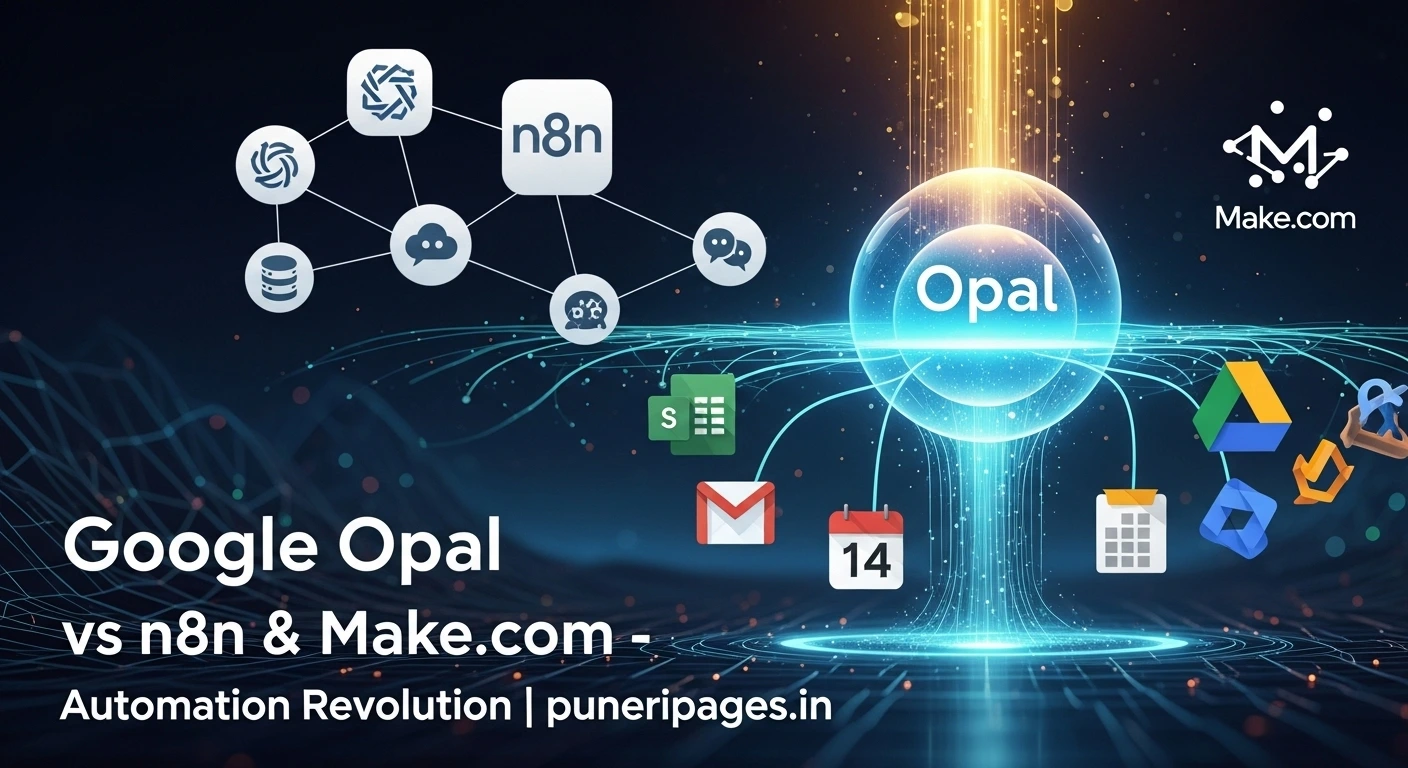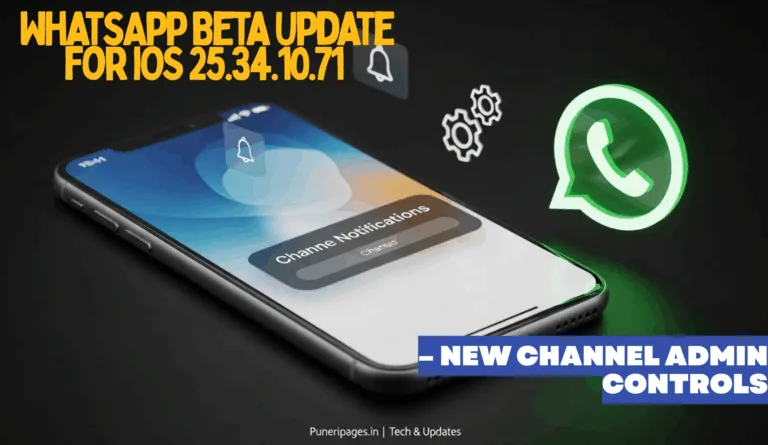
Google Opal enters the automation market, challenging n8n and Make.com with AI-first, Google-integrated workflows. | puneripages.in
By Prashant for PuneriPages.in
For years, workflow automation has been dominated by two big names: n8n, the open-source darling for developers, and Make.com, the favorite for power users who want flexibility across tons of apps. But now, a new player has entered the scene—Google Opal. It’s AI-first, built deep into the Google ecosystem, and has people wondering if it could shake up the entire automation market. But the real question isn’t just if it can replace n8n and Make.com—it’s how, and whether it even will.
Table of Contents
Meet the Players: Old Guards vs. the New Challenger
n8n and Make.com have earned their spot as the “Swiss Army knives” of automation. They can connect to almost anything—CRMs, marketing tools, niche APIs—without being tied to one ecosystem. Developers and businesses love them because they offer control, transparency, and endless customization.
Google Opal, though, is the “native champion.” Its superpower is the Google ecosystem—Sheets, Gmail, Calendar, Drive, and Google Cloud. It’s designed to understand natural language prompts and build workflows almost automatically. For people who find node-based automation intimidating, Opal is incredibly appealing.
Why Google Opal Could Shake Things Up
Opal brings some advantages that are hard to ignore:
- Deep Google Integration: Nobody connects with Gmail, Sheets, and Calendar like Google itself. Businesses already on Google Workspace could get workflows running faster than ever.
- AI-Powered Simplicity: With prompts in plain English, Opal can create workflows without writing a single node. That could lure a lot of Make.com users who feel overwhelmed by its complexity.
- Built-In Distribution: If Google bundles Opal with Workspace, millions of users might just start using it by default.
- Enterprise Confidence: Big companies trust Google for security, infrastructure, and billing. That trust could sway them toward Opal over smaller providers.
Why n8n and Make.com Aren’t Going Anywhere Soon
That said, the incumbents still have a stronghold:
- Platform Neutrality: n8n and Make.com work across everything, not just Google. Multi-platform businesses won’t want to be limited.
- Control for Power Users: n8n’s open-source, self-hostable model is unbeatable for developers. Make.com’s integrations and advanced features run deep. A fresh Google product can’t compete with that out of the gate.
- The “Google Graveyard” Factor: Google has a history of shutting down products—think Stadia, Reader, Hangouts. Businesses may hesitate to build critical workflows on a platform that might not exist in a few years. n8n and Make.com, by contrast, live and breathe automation—they’re here to stay.
The Verdict: Google Opal and Market Split
Most likely, Opal will dominate the Google-centric crowd and casual users who want AI-powered simplicity. But developers, multi-platform companies, and anyone needing advanced customization will stick with n8n and Make.com.
So, no—it probably won’t replace the incumbents entirely. Instead, it’s reshaping the landscape. Google will carve out its niche, while n8n and Make.com remain the go-to tools for power users. And honestly? That’s great for all of us—more options, better tools, and a push for everyone to innovate.
Sources & References:
- Google Opal Official Page
- n8n.io
- Make.com
- Tech coverage on Opal: The Verge, TechCrunch






